Physics

"Fermilab has very actively tried to scoop us by press release, even though their uncertainties are under serious challenge and they knew our measurements even before they released theirs."
Michael Riordan, a member to the Mark II collaboration, in an interview by David Perlman on the San Francisco Chronicle, July 21st 1989
The matter discussed in the interview is the first measurement of the Z boson mass of the CDF experiment at Fermilab, one thus performed using proton-antiproton collisions. The CDF result stupefied the whole world of particle physics for its unforeseen precision (90.90+-0.…

At the workshop I attended last week ("Publish, blog, tweet - furthering one's career in science") I discussed blogging for a researcher. One of the points I made was that through a blog a researcher may sometimes ask for the help of his or her readers, with usually great results.
Today I would like to put my own creed to the test, because I am searching for an article and I have no idea how to do it - usual searches with Google are insuccessful in this case. It is a newspaper article of 1989, which I need as it has relevance for a chapter of the book I have been writing.
The article appeared…

Last Thursday and Friday I attended a workshop aimed at students of science communication and researchers who want to use the web tools to improve their collaboration networks and the visibility of their scientific output.
I gave a talk discussing the good and the bad sides of blogging about one's research. My contribution was very well received and I received great feedback from the organizers. You can find a live streaming (with the slides I am discussing also shown) at the workshop site, here: http://www.scicomm.it/p/blog-page_1.html . To see my talk go to h.mm.ss 1.17.00 .
UPDATE: the raw…
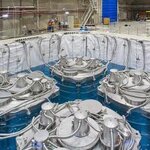
BEIJING; BERKELEY, CA; and UPTON, NY - The Daya Bay Collaboration, an international group of scientists studying the subtle transformations of subatomic particles called neutrinos, is publishing its first results on the search for a so-called sterile neutrino,
Though the search is on for a possible new type of neutrino beyond the three known neutrino "flavors," or types, the so-called sterile neutrino remains elusive.
A new paper by the Daya Bay Collaboration in Physical Review Letters finds no evidence for sterile neutrinos in a previously unexplored mass range.
There is…
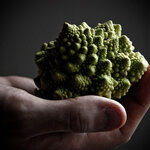
Patterns of emergence are all around us. Credit: Feliciano Guimarães/Flickr, CC BY
By Andy Martin, University of Melbourne and Kristian Helmerson, Monash University
From the fractal patterns of snowflakes to cellular lifeforms, our universe is full of complex phenomena – but how does this complexity arise?
“Emergence” describes the ability of individual components of a large system to work together to give rise to dramatic and diverse behavior.
Recent work by Enkeleida Lushi and colleagues from Brown University showed how bacteria in a drop of water spontaneously form a bi-directional vortex…
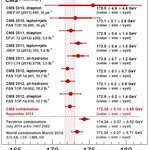
I wonder how interesting can be to an outsider to learn that the mass of the sixth quark is now known to 0.38% accuracy, thanks to the combination of measurements of that quantity performed by the CMS experiment at CERN. In fact, the previously best measurement was the one recently published by the DZERO collaboration at Fermilab, which has a relative 0.43% accuracy. "So what" - you might say - "this 14% improvement does not change my life". That's undeniably true.
The perspective can be a little different if we consider that the precise measurement of the mass of the top quark, the heaviest…

Sense About Science is a non-profit organization that campaigns in favour of more correct diffusion and use of scientific information. It is a great attempt at increasing the quality of the scientific information in circulation, focusing on evidence and debunking false claims. The web site of the organization explains:
Sense About Science responds to hundreds of requests for independent advice and questions on scientific evidence each year. We chase down dodgy science and mobilise networks of scientists and community groups to counter it. We also invite scientists to publish corrections of…
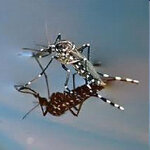
The very small is very weird; I explained that the last time in Small Is Ugly 1 already with help of the example of water being in the driest of places (Vastness and Fastness of the Small helps Evolution is of course somewhat related). And today, I still do not mean supposed "quantum weirdness", which is not about small stuff. Photons can have wave and coherence lengths of many kilometers, so there is nothing necessarily small about quantum phenomena, and claiming such nevertheless, well that is what distinguishes the many mediocre science writers from those rare ones who understand physics.…
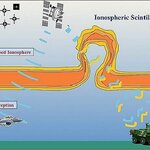
In the early morning hours of March 4th, 2002, a reconnaissance team of US Navy SEALs became pinned down on the ridge dividing the Upper and Lower Shahikot valley in Afghanistan.
A Chinook helicopter with 21 men on a mission to rescue them was heading for the snowcapped peak of Takur Ghar when U.S. military officers in Bagram radioed them with a message not to land on the peak, because the mountaintop was under enemy control.
The rescue team never got the message. Just after daybreak, the Chinook took heavy enemy fire and it crash-landed on the peak. Three men were…

Last Friday Samuel Ting, the winner of the 1975 Nobel prize in Physics for the co-discovery of the J/ψ particle, gave a seminar in the packed CERN main auditorium on the latest results from AMS, the Alpha Magnetic Spectrometer installed on the international space station.
The seminar began with a well-crafted exposition of AMS, detailing how the spectrometer is constructed with a set of subdetectors capable among other things of identifying and measuring positrons from cosmic rays with extremely high purity. Ting spent the first 20 slides or so of his talk providing detail on the tracker,…